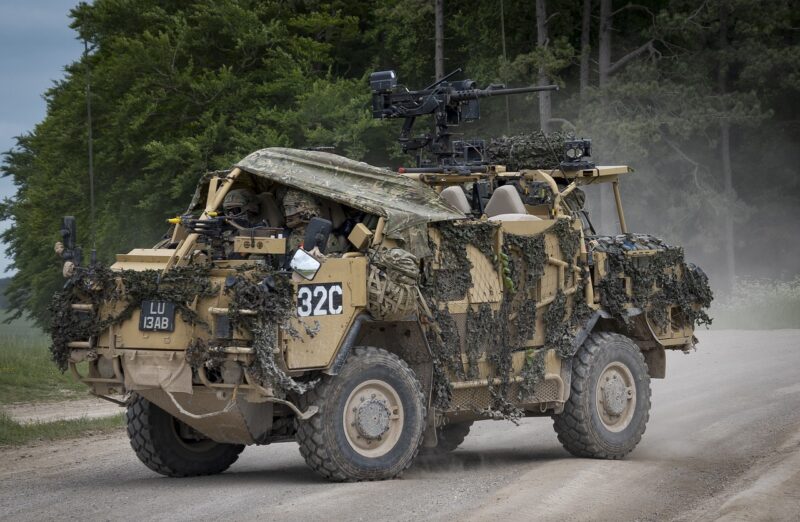How Warfare Has Changed from Medieval Battles to Cyber Warfare
November 15, 2024

Warfare, a constant in human history, has undergone radical transformations from its medieval roots to the complex battles of the digital age. In this article, we will explore how warfare has evolved over centuries, shaped by advances in technology, changes in societal values, and political landscapes.
1. The Medieval Battlefield: Honor, Valor, and Armored Knights
In the medieval period, warfare was characterized by close combat, chivalry, and the valor of armored knights. Battles were fought on fields governed by a set of codes, such as the Chivalric Code, emphasizing honor and bravery. Key elements included:
- Heavy Cavalry: Armored knights on horseback were the dominant force. Equipped with swords, lances, and shields, they represented the nobility and often led the charge into battle.
- Siege Warfare: Castles and fortified cities were the centers of power. Siege tactics involving battering rams, catapults, and strategic blockade were essential to victory.
- Infantry and Archery: Foot soldiers, often less armored than knights, played crucial roles in battles, supplemented by archers using longbows to rain arrows upon the enemy.
- Tactics and Strategy: Battles were fought using formations and lines, requiring commanders to possess an understanding of terrain and the movement of troops. Historical figures like Sun Tzu and Niccolò Machiavelli wrote extensively about war tactics, which emphasized deception and strategic positioning.
As the medieval era progressed, technological advancements such as gunpowder began to emerge, signaling the dawn of a new kind of warfare.
2. The Gunpowder Revolution and the Birth of Modern Warfare
The introduction of gunpowder in the late medieval period transformed battlefields forever. The significance of this revolution cannot be overstated:
- Firearms and Artillery: The emergence of cannons and muskets shifted the balance of power, allowing for long-range attacks and breaking through fortifications. Battles such as the Battle of Agincourt demonstrated how a well-prepared infantry wielding longbows could defeat a heavily armored cavalry based on tactics and terrain utilization.
- Professional Armies: The era also saw the rise of standing armies composed of trained soldiers rather than feudal levies. This shift allowed for better discipline, training, and organization on the battlefield.
- The Nation-State and Warfare: The development of nation-states led to wars fought for resources, territory, and power, laying the groundwork for the conflicts we see today. Treaties and alliances became increasingly important to diplomatic relations and warfare strategy.
This period eventually set the stage for the catastrophic wars of the 19th and 20th centuries, characterized by mass conscription and industrialization.
3. The Industrial Revolution: Total War and Global Conflict
The Industrial Revolution ushered in an era where technology sharply defined the scale and nature of warfare:
- Mass Production and Weaponry: The production of rifles, machine guns, and artillery pieces became mechanized, allowing nations to equip large armies with the latest technology, significantly increasing casualties in wars like World War I and II.
- Air and Naval Power: The ability to wage warfare through the skies and at sea introduced new dimensions to military strategy. The advent of aircraft carriers, bombers, and submarines changed how wars were fought, emphasizing the importance of air and naval superiority.
- The Concept of Total War: In World War I and II, the definition of warfare expanded to include civilian targets and economic infrastructure. Civilians became direct participants through total war strategies, as seen in the bombings of cities like Dresden and Hiroshima.
As nations engaged in large-scale conflicts, war was no longer just a matter of soldiers on the battlefield; entire nations were mobilized for the cause, altering societal constructs for years to come.
4. The Cold War Era: Proxy Wars and Asymmetric Warfare
In the aftermath of World War II, the world became polarized into two superpowers, the USA and the USSR, during the Cold War. This period introduced a new paradigm of conflict:
- Nuclear Deterrence: The development of nuclear weapons created a tenuous balance of power, leading to the concept of Mutually Assured Destruction (MAD). This paradigm discouraged direct conflict yet gave rise to proxy wars as both powers vied for influence worldwide.{
- Guerrilla Tactics: Conflicts such as the Vietnam War highlighted the effectiveness of guerrilla warfare against conventional military forces. Asymmetrical warfare became a reliable strategy for smaller nations or groups against larger, more powerful armies, relying on stealth, surprise, and local support.
- Information Warfare: An emergence of psychological operations and media manipulation took the battlefield into the realms of information—shaping public perception and morale through propaganda and media control.
The Cold War ended without a traditional military confrontation, yet the tactics developed during this era continued to influence military strategy in contemporary conflicts.
5. Cyber Warfare: The New Frontier
As we step into the 21st century, warfare has transformed yet again, shifting into the cyber realm. _______________________
- Cyber Attacks as a Warfare Tactic: Governments and organizations now face threats not just from physical armies but also from computer hackers disrupting critical infrastructure, stealing sensitive information, or influencing political processes. The 2016 US elections illustrated the vulnerabilities that can arise from cyber interventions and disinformation campaigns.
- Global Reach with Minimal Resources: Cyber warfare enables smaller nations or non-state actors to conduct impactful attacks without the resources needed for conventional warfare. This democratization of warfare has profound implications for global security and diplomatic relations.
- Security and Response Challenges: The lack of physical borders in cyberspace complicates responses to attacks, and nations struggle with developing effective defense strategies. The anonymous nature of cyber attacks blurs the lines of accountability, making deterrence difficult.
As we navigate the complexities of cyber warfare, the battlefield has expanded into the realm of information, posing new challenges for global security in the 21st century.
6. Conclusion: The Evolution of Warfare and Its Implications
The evolution of warfare from the valorous battles of knights to the complex domain of cyber warfare highlights humanity’s ability to adapt to changing circumstances. Each era of warfare reflects the societal values and technological advancements of its time.
In pondering the future, we must consider how emerging technologies like artificial intelligence, autonomous drones, and cyberspace will shape the way wars are fought.
As we continue into a time defined by rapid technological advancements, understanding the trajectory of warfare can help shape policies and strategies for a more secure global landscape. The shifting nature of conflict forces us to consider ethics, accountability, and innovation in ways we haven’t before.
Ultimately, the battlefield of the future will be defined not just by the weapons we wield, but by the principles guiding our engagement in the arena of global conflict.








